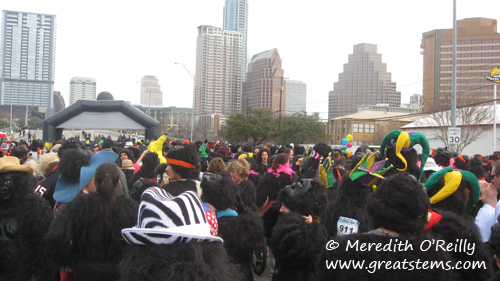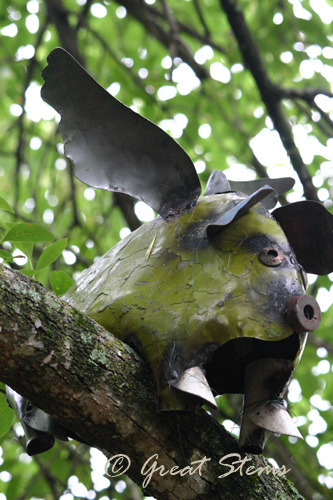This spring the Travis Audubon Urban Habitat Committee has been leading the way to design and install a wildlife garden at Elderhaven. This beautiful and historic building houses the headquarters of Travis Audubon, but the primary occupants are member organizations of Austin Groups for the Elderly, which serve older clientele in a variety of ways. For use by the on-site daytime clientele, there is a lovely garden, now made even more so by the addition of wildlife-friendly native plants that have already attracted many birds, butterflies, and other critters for everyone to enjoy.

The habitat committee did, and continues to do, an amazing job with the habitat. While I helped out where I could on the butterfly habitat installation, my schedule didn’t allow me to be fully involved in the design and preparation, but one thing I could do was plan the plant ID markers. At the same time, Elderhaven was looking for an activity that their older clientele could participate in to help beautify the garden. The plant marker project was a perfect fit.

Rather than use traditional metal plant markers, I thought ceramic markers would be both lovely and fun to create. I contacted Firepit Ceramics about the idea, and they were incredibly helpful and supportive. We rolled out slabs of clay that I cut and shaped into small holed squares, and after the squares dried, Firepit staff fired them in the bisque kiln.

The unglazed pottery was then ready to be painted, and a few days later, members of the TAS Urban Habitat Committee, AGE staff, and AGE clientele gathered at Elderhaven for a painting party. 
Materials included special paint glazes for ceramics, small-tipped paintbrushes, pencils for sketching, little bowls/cups of water, paper towels, and color images of the plants to be highlighted.


The painting stage of ceramics appears duller in color than the final products will be. The paint doesn’t get its full bold color until it has been clear-glazed and fired in the kiln.
 The painting party was a delight, as were each of the participating AGE clientele, and the results are better than we ever imagined. Each marker is hand-painted and unique, making them all very special, but the best part is how heart-warming every part of this project has been.
The painting party was a delight, as were each of the participating AGE clientele, and the results are better than we ever imagined. Each marker is hand-painted and unique, making them all very special, but the best part is how heart-warming every part of this project has been.
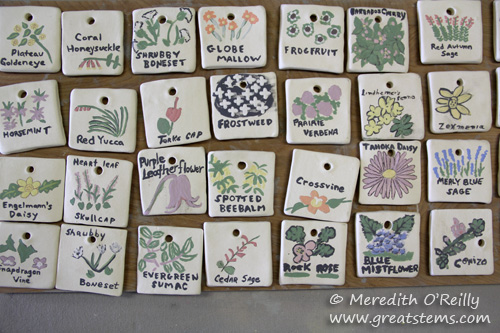
Making ceramic plant markers would be a fun family project as well as a great way for schools or clubs to help bring art and education to their habitats and gardens. In fact, many schools already have their own kilns for their art classes, and what a way to get all students involved! Not just markers, but handcrafting tiles, saucers for birdbaths, or other works of art would be great, too — the possibilities are endless!

But what about the stakes? you might ask. These are relatively simple to make. I visited my friend Bob of Draco Metalworks and we made them together. It was an easy matter of snipping firm galvanized wire and bending it into shape around something curved. I can’t tell you much about the metal we used, as Bob utilized scrap roofing materials he had on hand. But I imagine you’d be able to find a variety of choices at a building or fencing supply company.

The markers are now all out on display at Elderhaven, and next opportunity I have, I’ll visit to show how the garden has grown. To learn more about the habitat project, please take a moment to read the story of the Elderhaven wildlife garden.
Back at Firepit, my youngest son and I decided to create a few garden markers of our own. As our family seems to have a bit of a zombie focus from time to time, here is our current favorite (players of Plants vs. Zombies might get this one). While the marker might not identify a specific plant, it sure gets an important message out!
 Never underestimate the power of plants!
Never underestimate the power of plants!
P.S. See those glorious raindrops? How lovely it is to walk upon moistened earth. Thank you, rain.




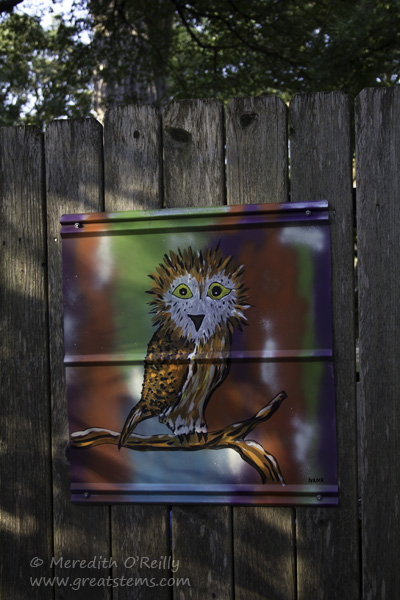






 I guess if you’ve gotta bee at work and bee bzzzzy, you might as well bee a bee doing it! (Halloween helps.)
I guess if you’ve gotta bee at work and bee bzzzzy, you might as well bee a bee doing it! (Halloween helps.)



 How about a shovel that becomes a rose, with a rake as the foliage? The rake is actually painted a light green, but in the sun it looks more yellow than lime, I admit. Someday, if I happen to have a different color of leftover paint, I might paint over it, but part of this endeavor is utilizing what I have at home, not going out and buying something.
How about a shovel that becomes a rose, with a rake as the foliage? The rake is actually painted a light green, but in the sun it looks more yellow than lime, I admit. Someday, if I happen to have a different color of leftover paint, I might paint over it, but part of this endeavor is utilizing what I have at home, not going out and buying something. 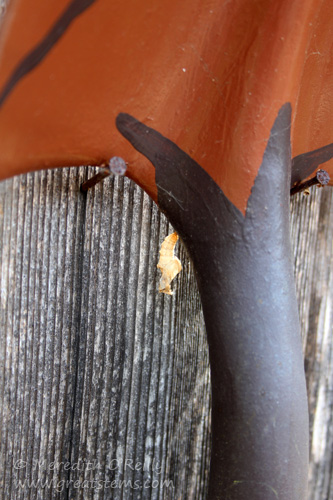
 A smaller sawblade gave an opportunity for another bloom, and a second shovel blade became a Purple Coneflower. The coneflower might be my favorite of the tool bouquet, honestly. The butterfly isn’t a leftover tool, obviously, but a gift from sweet friends.
A smaller sawblade gave an opportunity for another bloom, and a second shovel blade became a Purple Coneflower. The coneflower might be my favorite of the tool bouquet, honestly. The butterfly isn’t a leftover tool, obviously, but a gift from sweet friends.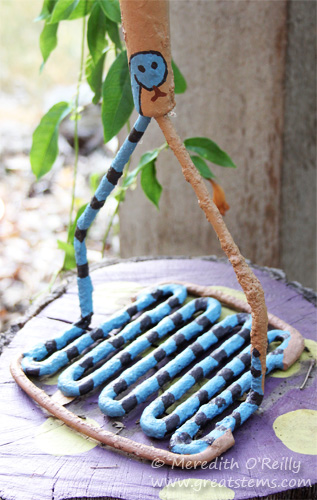







 The painting party was a delight, as were each of the participating AGE clientele, and the results are better than we ever imagined. Each marker is hand-painted and unique, making them all very special, but the best part is how heart-warming every part of this project has been.
The painting party was a delight, as were each of the participating AGE clientele, and the results are better than we ever imagined. Each marker is hand-painted and unique, making them all very special, but the best part is how heart-warming every part of this project has been.


 Never underestimate the power of plants!
Never underestimate the power of plants!
